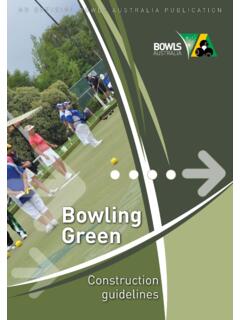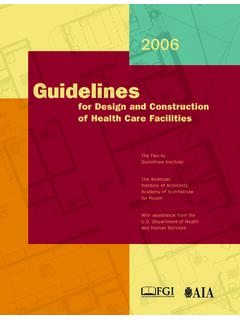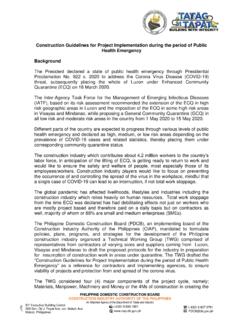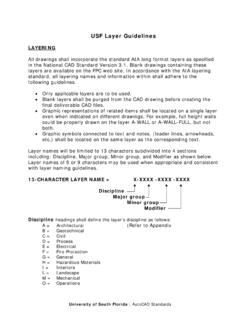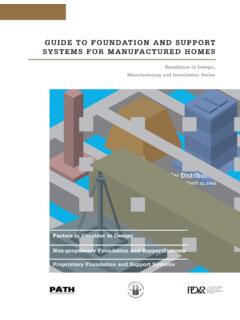Transcription of DESIGN GUIDE - Thermoform
1 DESIGN GUIDEOVERVIEWDRAW RATIORADII AND CHAMFERSUNDERCUTSDRAFTTEXTURESRIBS & LOUVERSFASTENINGDIMENSIONAL TOLERANCESDIMENSIONING65 Waukegan Road | Lake Bluff, IL 60044 | PH: | Waukegan Road | Lake Bluff, IL 60044 | PH: | PROCESSESVACUUM FORMING:The process of evacuating air from the sealed space between the hot sheet and the mold, thus allowing atmospheric pressure ( ) to force the sheet to conform with the contour of the : Non-critical appearance covers, dunnage trays, internal covers. Competes with sheet metal and Fiberglass.
2 A low to medium volume FORMINGThe process of applying compressed air (20-120 ) to a hot sheet, thus forcing it to conform to the contour of the mold. vacuation of the air between the sheet and the mold is : High appearance covers, computer housing, microprocessor based equipment, typically non-structural. Part size is usually 12 x 12 and larger. Competes with injection molding. A low to medium volume process. TWIN-SHEET PRESSURE FORMINGThe process of injecting compressed air (20-120 ) between two hot sheets, thus forcing it to conform to the contour of each of two molds mounted opposed to each other.
3 Evacuation of the air between the sheet and the mold is : Those enclosures that require structural rigidity. Appearance items that require high surface detail and yet light weight. Competes with blow molding and rotational molding. A low to medium volume THE SHEETT hermoforming requires a previously extruded sheet. In the process the two operations; , sheet extrusion and forming, are uncoupled. This simplifies the process, but does add to the cost. Costs are increased because of the extra energy required to heat the polymer twice, and the fact the extruders are commonly custom processors that also need to generate profits to continue to exist.
4 On the other hand, gauge changes, color changes, even material ( , polymer) changes can be done very easily in thermoforming because neither the oven nor the mold care what the sheet looks Waukegan Road | Lake Bluff, IL 60044 | PH: | the final part almost always weighs less than the starting sheet, the trim must be captured and returned to the sheet extruder for reprocessing. This results in a scrap credit which is included in the price of every SELECTIONA lmost any thermoplastic can be thermoformed. As with any manufacturing process, there are wide variances in the cost of different materials due to the polymer cost, temperature of processing, crystalinity of the resin, or, in general, the degree of difficulty of extruding the sheet.
5 The most common resins (and therefore the most cost effective ones to specify) are FRABS, ABS, DKE or Kydex, HIPS, HDPE or RATIOGUIDELINES:The deeper or taller the part the heavier the starting gauge of sheet required. Allowing the part or any feature of the part to be narrower than it is tall will thin the sheet at a much quicker :The draw ratio is the key to understanding thermoforming processes. The part has a finite amount of surface area that needs to be covered by a flat two-dimensional sheet. When the sheet is heated and forced over or into a mold it must stretch to conform to that shape.
6 As the sheet stretches it thins out. Local DESIGN features on the part may cause the sheet to thin at a greater rate than in adjacent :The draw ratio can be described numerically if the surface area can be calculated. The formula for expressing the draw ratio is as follows:Draw Ratio = the Surface Area of the part / Footprint of the part65 Waukegan Road | Lake Bluff, IL 60044 | PH: | #1:Assume a part is 10 x 12 x 2 deep. Therefore the Draw Ratio will be:Surface Area = 2(10 x 2 ) + 2(12 x2 ) + 10 x 12 = 40 + 48 + 120 = 208 Footprint = 10 x 12 = 120 Draw Ratio = 208 /120 = the desired ending wall thickness of the part is use the draw ratio as follows to estimate the starting gauge of the sheet:Draw Ratio x Desired Finished Gauge = Minimum Starting x =.
7 170 Assuming perfect material #2:Assume a part size of 10 x 11 x 5 Area = 2(10 x 5 ) + 2(11 x 5 ) + (10 x 11 ) = 300 Footprint = 10 x 11 = 110 Draw Ratio = the desired ending wall thickness is use the draw ratio value as x = .273 starting gauge. Assuming perfect material above examples ignore the effect that a specific feature on the part ( a localized severe draw like a sharp corner) may have on the thinning of the sheet. The draw ratio is designed to get the part designer in the ball park 65 Waukegan Road | Lake Bluff, IL 60044 | PH: | calculating the necessary starting gauge.
8 Many part quotations will have two gauges specified (a high and low) because of the difficulty in predicting the proper starting gauge. Because the starting gauge is so critical to the cost of the part it is important to get proper feedback from the thermoformer when reviewing draw ratio. There are many thermoforming techniques and mold designs used to help the sheet stretch as uniformly as possible. A competent thermoformer will be able to implement them in a project with a difficult draw AND CHAMFERSGUIDELINES:Avoid a sharp three-sided corner by using a radius or chamfer.
9 The radius at the bottom of the draw is most critical. The deeper the part the larger the radius or chamfer :The key to good part DESIGN in thermoforming is understanding the need for a proper size radius or chamfer. These features are typically needed to allow for part strength, retention of material thickness, and/or :One of the most difficult features in thermoforming is the three-sided sharp corner in a female mold. This feature accentuates the draw ratio because it forces the material to over the three walls as it is pushed into the corner.
10 The material appears to stretch and thin out at a geometric rate, usually causing the material to either thin to an unacceptable ending gauge or actually tear and create a hole in the part. A quick check to see if this condition is occurring is to hold a part up to a light source and inspect the corners to see if the gauge is so thin that light can be transmitted through the part. Many times the tool is constructed ignoring this problem, causing either a heavier starting gauge to be used or an adhesive filler applied to the inside of the part backing up the corner and adding strength.
